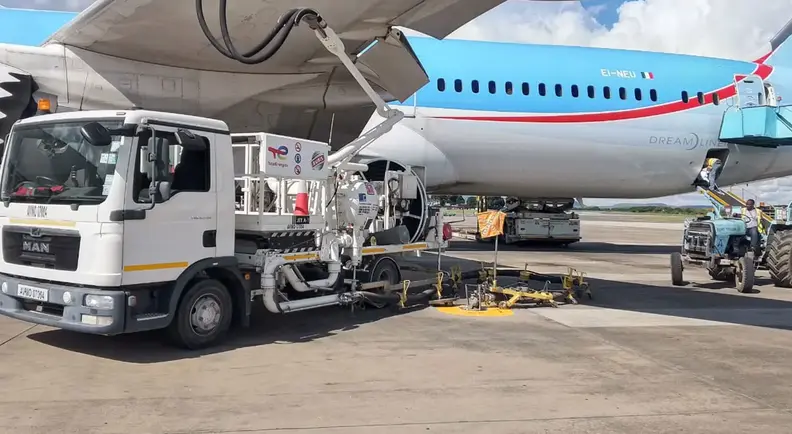
Aviation Fuels
AVIATION FUELS
Jet A-1 (aviation turbine fuel): available at all our airport locations in Kenya.
Manufacturing specifications for aviation fuels are very stringent. When necessary, at every stage between refinery and aircraft tank, fuel quality is checked by sampling and laboratory analysis to ensure that the fuel conforms to the specification when it is delivered to the aircraft.
Jet A-1
Aviation turbine fuels are used for powering jet engines, turbo-prop engines and more recently diesel piston engines in aircraft.
Jet A-1 is a kerosene grade of fuel suitable for most turbine engine aircraft. It is produced to a stringent internationally agreed standard, has a flash point above 38ºC (100ºF) and a freeze point maximum of -47ºC. Jet A-1 is the usual fuel for turbines in the world. Jet A-1 meets the latest version requirements of British specification DEF STAN 91-91, ASTM specification D1655 and NATO Code F-35.
In specifying requirements for jet fuels, the main objective is to ensure that fuel systems will function satisfactorily over a wide range of temperatures and pressures.
These environmental factors can be very severe owing to the conditions under which modern jet aircraft operate. In addition to these requirements, engine developments and the continual effort to lengthen the period between engine overhauls has led to the introduction of a number of new sophisticated specification requirements, far removed from those for aviation gasoline. Among these are the need for high thermal stability, low luminosity and compatibility with certain fuel system materials.
Aviation kerosene is the most common fuel in commercial use. The standard civil grade of aviation turbine fuel, Jet A-1, is manufactured to meet the requirements of the latest version of the Aviation Fuel Quality Requirements for Jointly Operated Systems (AFQRJOS) "Check List".
The Check List was drawn up by the major international oil supply companies to ensure uniform quality standards for civil jet fuels world-wide (excluding USA) and comprises the most restrictive requirements of the major fuel specifications. Compliance with Check List requirements thus guarantees meeting the requirements of the individual specifications.